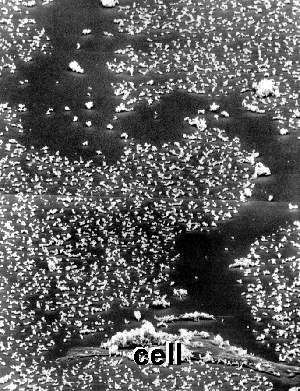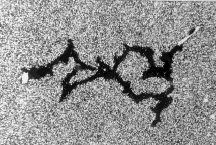
For many years people have believed that cell migration is random, and many still do. There are understandable reasons for this belief. For example, the complex shape changes of migrating cells are quite confusing in the short run. In order to recognize the non-randomness of cell migration much longer observation times are required. Long periods of live cell observation in turn require keeping the cells alive and moving inside a temperature controlled, sealed observation chamber under the glaring lights of a microscope. Often, researchers placed too many cells in the microscope field, which added the complexities of cell-to-cell collisions to the situation. Finally, it is always tempting to call something 'random' even if it is merely 'unpredictable' by the knowledge of the time.

Many years ago I found a new technique that allows cells to migrate in the controlled, protected and and dark environment of their normal culture incubator for days and weeks, while the experimenter can still observe their movement. This is possible because the technique, called phagokinetic tracks works like a cloud chamber in which the cells leave tracks of their movements in a carpet of tiny gold particles on their substratum. The phagokinetic tracks can be viewed by scanning electron microscopy like in the illustration above, but it is more convenient to use darkfield light microscopy like in all the illustrations below.



Not only are the tracks of sister cells related, but the shapes and internal architecture of their bodies (i.e. their cytoskeleton) appear as symmetrical or identical as their tracks are [See ref 1, ref 2 ]. This suggests that the programs that determine the future movements of the cells are implemented by building and re-building the inner architecture of the cells [See ref 3 ]. .
If cells are able to program directional changes at certain times in their life cycle they must be able to measure angles and time durations. This implication is strengthened by their ability to override these programs in sophisticated ways if they collide with other cells, encounter guiding lines or participate in group migration.